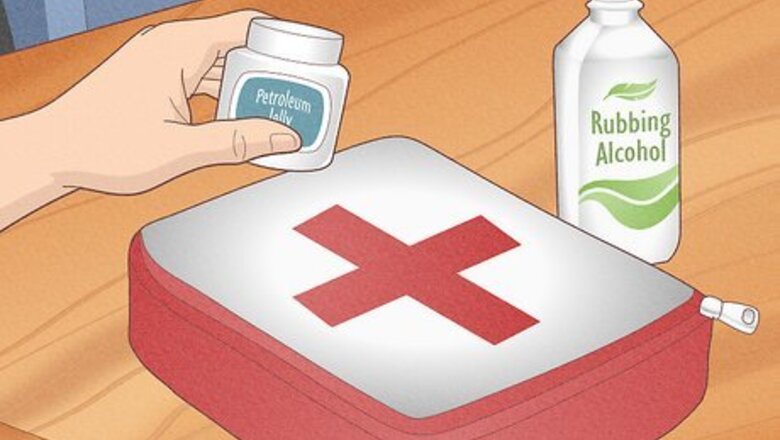
views
First-aid kit

Be prepared for minor medical emergencies. Your kit doesn’t have to have all the trimmings, but it should have the bare essentials, like adhesive bandages, gauze, roller bandages, adhesive tape, a thermometer, a cold pack, antiseptic, rubbing alcohol, tweezers, and a needle. You can even go the extra mile by including: Latex gloves Hard soap Safety pins Petroleum jelly A snake bite kit
Cell phone charger
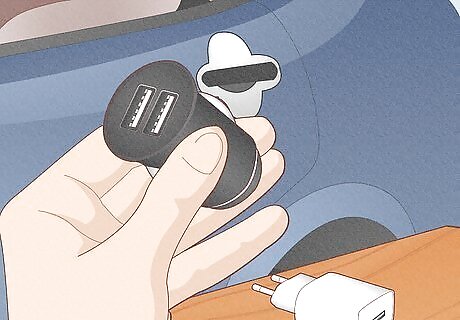
It’s important to keep your phone juiced up so you can call for help. Depending on the make and model of your car, a USB cord or cigarette lighter-style charger might do the trick. If you don’t want to rely on your car’s fuel line, pack a portable charger instead. Portable chargers are very affordable, with some costing less than $20. The price point really depends on the amount of juice you’d like your battery pack to store, though.
Flashlight and batteries
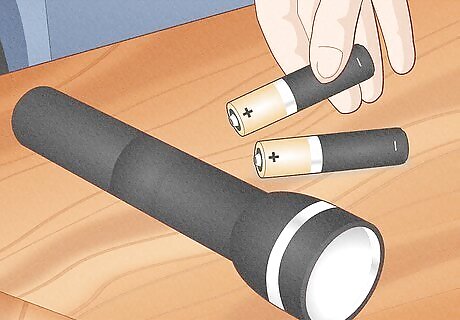
A functioning flashlight is essential if you’re stranded off-road at night. It can also help you search your car in the dark, so you don’t have to drain your car’s battery in the process. Make sure you have plenty of extra batteries stashed in your car as well, so you don’t run out of light.
Bottled water

Water will be essential if you get stranded. Stick a small package or case of plastic water bottles in the back of your vehicle so the bottles won’t crack or break if the temperature drops. Although packaged water lasts for a while, it’s a good idea to replace your bottles every 6 months to keep the water as fresh as possible.
Spare tire equipment
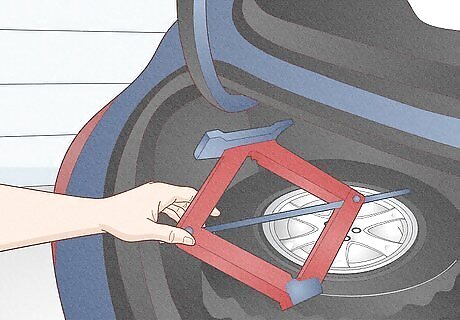
Always keep a spare tire, jack, and tire iron in the back of your car. Check once every few months to make sure that your spare tired is filled up and in good condition. Make sure your jack and tire iron are stored nearby too, so you can change the tire if you need to. A tire gauge is also handy so you can check your tire pressure. Stop by your local auto shop or car repair place if you need to replace or update your spare tire tools.
Jumper cables
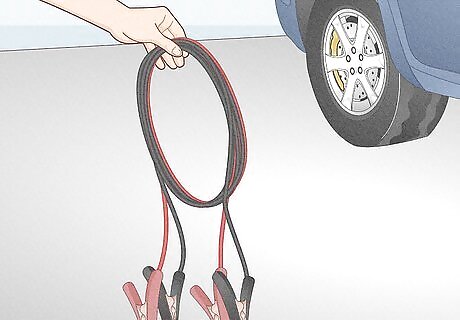
Jumper cables can get you out of a jam if your car battery dies. Keep these cables in your car at all times in case you need to phone a friend or flag down a good samaritan. A portable jump starter is also a great option if you don’t want to rely on another person to get your car up and running.
Gas can
Top off your car quickly if you’re stranded on the side of the road without fuel. Pick up a gas can from your local gas station and fill it up. Seal the container so no gas can leak out, and keep it in the back of your car in case you run out of fuel. Keep in mind that gasoline lasts about 6 months when stored in a securely-sealed gas can, so be sure to dispose of the gas if you haven’t used it by then. You can also pack an empty gas can and siphon if you’d rather not keep a full can of gas in your car.
Tow strap
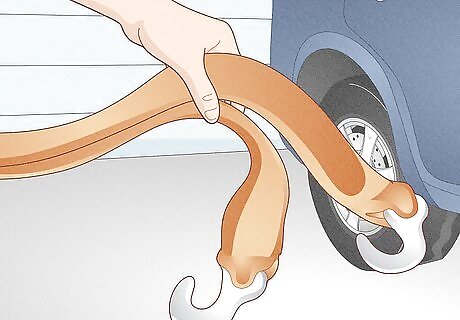
You may need a tow strap if your car breaks down on the road. Check the label on the tow strap to ensure that it’s the right size and durability for your car. Also, always double-check your car’s user manual before using a tow strap so you don’t damage your vehicle in the process. You can buy tow straps online or at a hardware or auto supply shop for less than $25.
Simple tool kit
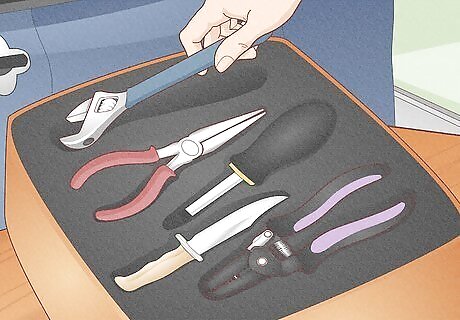
A few basic tools can be very helpful to have on hand. From an uncooperative glove compartment box to a jammed car door, there’s no telling when a basic toolbox may come in handy. Stash a multi-tip screwdriver and wrench set in your kit, along with a: Knife Wire cutter Pair of pliers
Rain poncho

Stay dry if you get caught in a bad rainstorm. The weather can change really quickly when you’re on the road, and a rain poncho definitely comes in handy if you have to brave the elements. Stash one in your glove compartment so it’s easily accessible if you need it.
Reflective vest
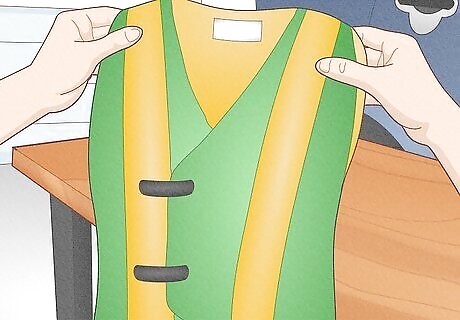
This ensures others will see you if you need to step out of the car. Maybe you’re exiting the car to inspect your tires, or you’re checking to see if emergency help has arrived. A reflective vest will reflect off oncoming headlights, which gives you an extra layer of safety on the road. You can buy a reflective vest online for less than $20.
Road flares
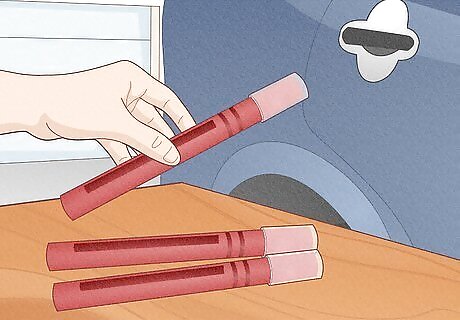
Road flares can be valuable if your car breaks down at night. If you get stranded on the side of the road, light the flares and set them about 10 to 20 yd (9.1 to 18.3 m) behind the boot of your car. This way, passing a helpful driver or roadside assistance vehicle won’t park too close to your vehicle. Reflective triangles can also help your vehicle stand out to passing drivers.
Warm clothes and blankets
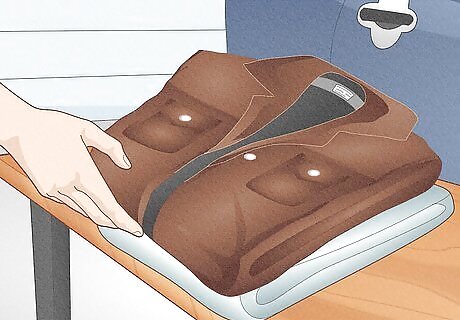
Extra layers are invaluable when you’re stuck in freezing cold weather. Slip on a hat, coat, scarf, and mittens if you’re stranded in a car for a long period of time, especially if the temperature starts to drop. You can even double up on layers, too–it’s better to be too warm rather than too cold! A thick blanket is another great way to stay nice and toasty without draining your car’s fuel in the process. Consider packing multiple quilts and blankets if you live in an especially cold area.
Shovel and ice scraper
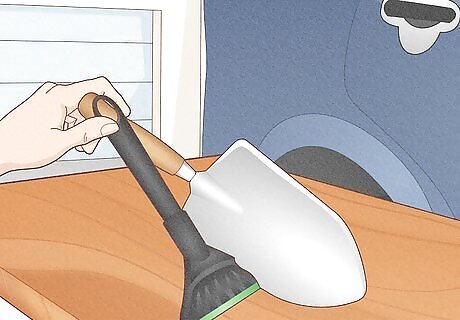
You may need to clear ice, snow, or slush away from your vehicle if you live in a cold area. Ice scrapers typically have a scraping tool on 1 end and a snow brush on the other. Remove any tough patches of ice with the scraper part of your tool, and clear away mounds of snow with the brush. If you get stuck in a snowbank or other snowy terrain, use a foldable metal shovel to clear your way out. It’s actually against the law in some places to drive with snow and slush on your car, so it’s really important to have this tool on hand. You can get an ice scraper and brush at a big-box retail or home improvement store for less than $20. You can get a foldable shovel online for around $25.
Sand or non-clumping cat litter
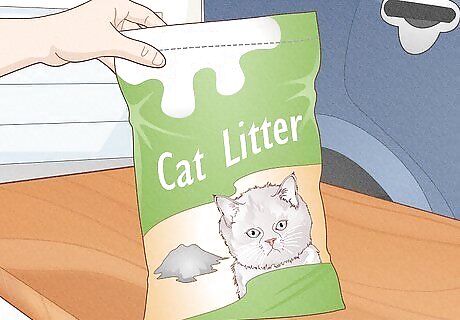
Sand or cat litter can provide traction during winter weather. If you find yourself stuck on a really snowy or icy road, scatter a handful of sand or non-clay, non-clumping cat litter in front of your tires. The gritty texture of the litter or sand can help your vehicle get some traction on the ground, and may help you get back on the road more quickly. Clay cat litter doesn’t have the right texture to provide tire traction.
Battery-powered radio
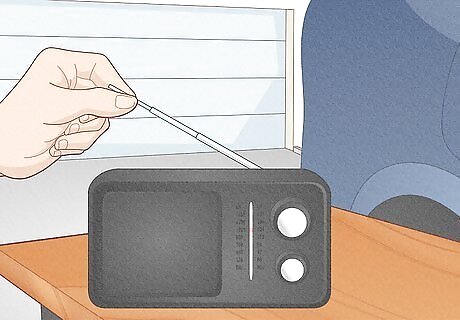
Use this to tune into important weather and safety updates. Keep the radio juiced up with fresh batteries, and keep an extra pack of the appropriate batteries stashed somewhere in your car. If you get caught in a patch of bad weather, you can tune into the radio for an up-to-date weather forecast. Hand-cranked radios are a great alternative, and don’t require any electricity or batteries to operate.
Fire extinguisher
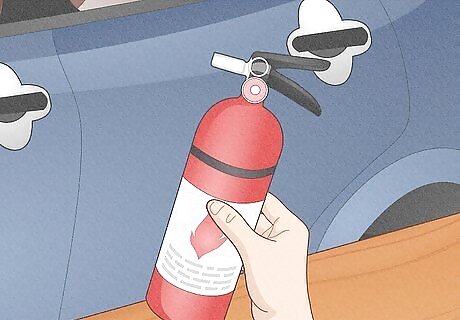
Keep a small fire extinguisher on hand for minor fires. A 5 lb (2.3 kg) model should be enough and is easy to fit in the back of your car or in your truck. In the event of a big car fire, focus on getting out of your vehicle and wait for emergency vehicles to arrive–don’t try to put it out yourself.
Duct tape
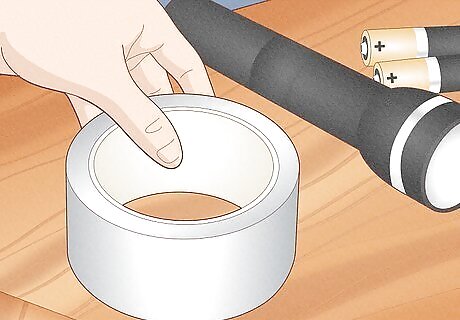
Duct tape can help in a pinch for quick repairs. While it shouldn’t be a long-term solution for any type of car repair, duct tape can provide a temporary solution when you’re stuck in the middle of nowhere.
Non-perishable food

Canned food, granola bars, and energy bars are all fair game. Stock up on plenty of especially high-calorie snacks and food, so you don’t get too hungry during a roadside emergency. Here are some foods you could keep on hand: Dried fruits Nuts Dry cereal Extra pet food (if you travel with your pets often)




















Comments
0 comment